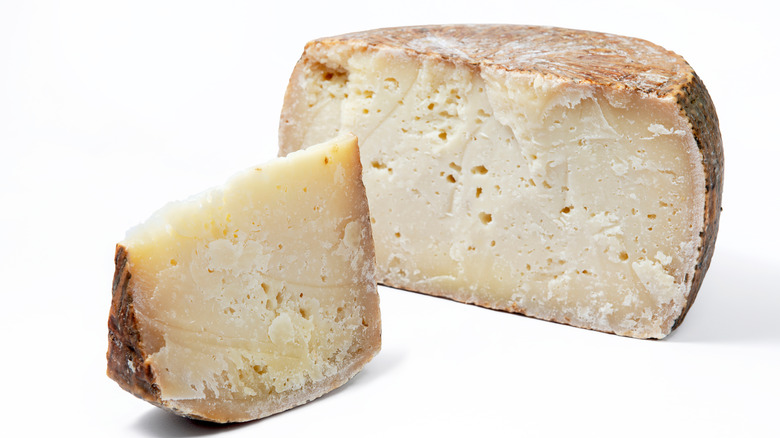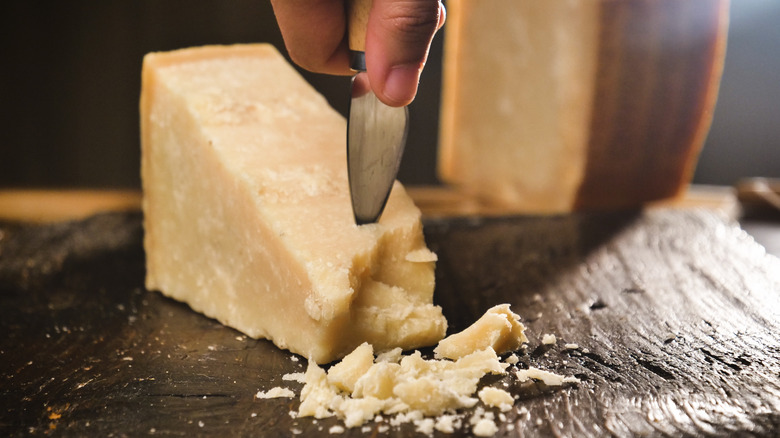How To Tell White Calcium Spots Apart From Mold On Hard Cheese
There are a few traditional signs that your fresh food has gone bad: it's developed a bad smell, its color has changed, its texture has altered, or the most obvious, it has grown mold. In the case of hard cheese, it may have developed white spots, but before you assume the cheese needs to be chucked into the garbage, take a closer look. Those spots may not be mold, but naturally forming calcium lactate spots also called cheese crystals.
Commonly found on hard cheeses like cheddar cheese, aged gouda, and gruyere, calcium lactate spots are formed when lactic acid interacts with the cheese's calcium. In fact, many cheese lovers appreciate the cheese crystals, which indicate the cheese is well-aged. The reason softer cheeses like mozzarella don't get these white marks is that they have more water content, preventing the lactate from being seen.
In the case of the hard cheese and its aging process, lactate rises to the surface of the cheese along with the moisture, which recedes leaving the lactate on the surface. That lactate is then visible as white crystals or even a layer of white film that some may think is mold. So how can you distinguish lactate on the surface versus mold? After all, you definitely don't want to be eating mold for both health and flavor reasons.
Feeling and appearance
No one wants to toss out a great piece of cheese if it doesn't need to be, so it's important to be able to distinguish mold from calcium lactate. To do so, it often comes down to how the marks look and feel. If the marks are molded, then they will be soft. They are also more likely to be a raised mass on the surface of the cheese. In comparison, calcium lactate crystals will feel coarse to the touch. They also should be more engrained in the cheese than mold.
Another trick to distinguish one from the other is to take a knife and scrape the surface of the cheese. If the white part flakes off, it's likely calcium lactate. Mold, however, will probably just fall apart. Cheese crystals will be found on the inside, as well as the outside of the cheese, so if the substance is found only on the surface of the cheese, it's likely to be mold and the cheese should not be eaten. But if it's calcium lactate, it's fine to go ahead and enjoy a piece of that deliciously aged hard cheese.

